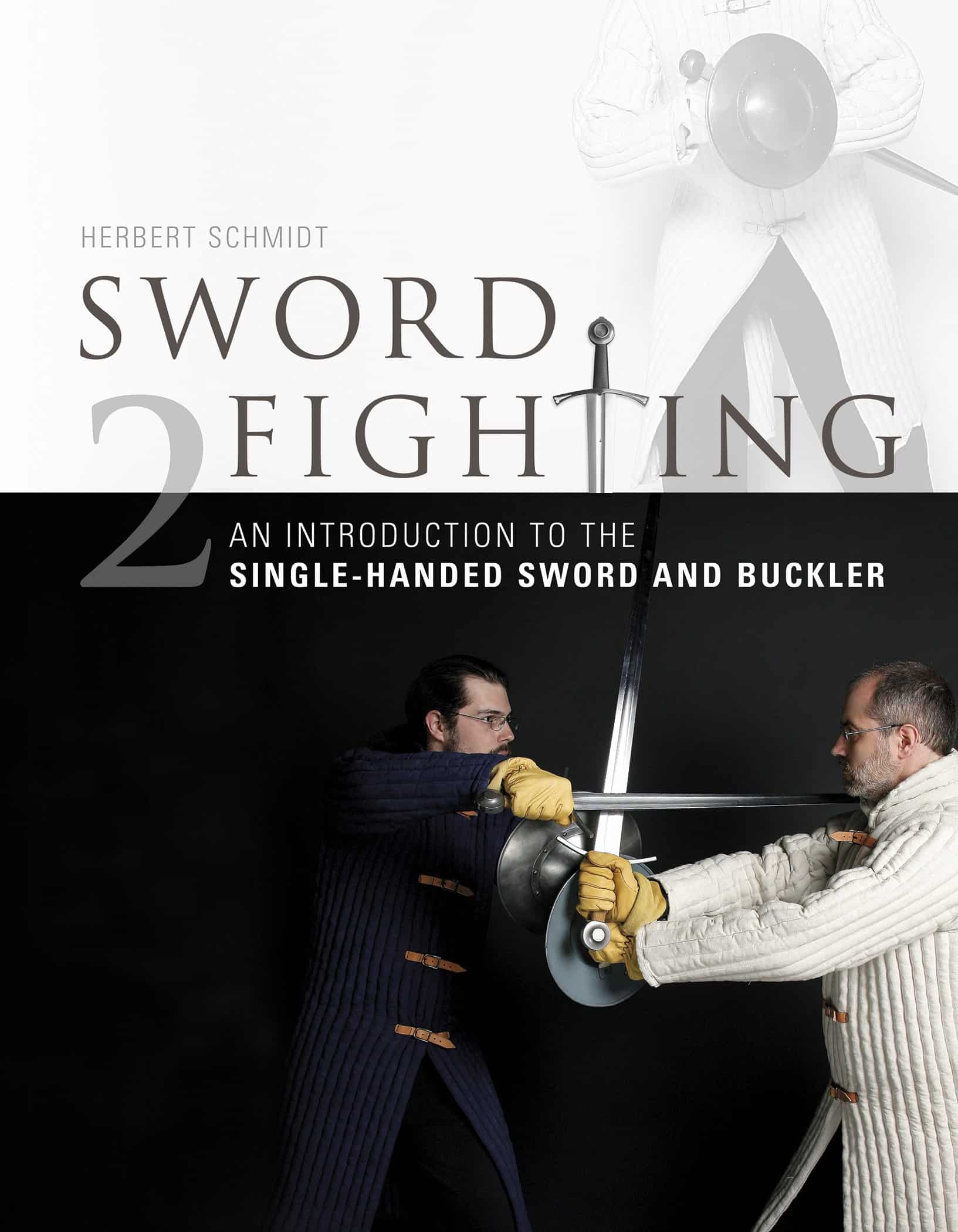Sword Fighting 2: An Introduction To The Single-Handed Sword and Buckler by Herbert Schmidt
Sword Fighting 2 by Herbert Schmidt is an introductory instructional guide for sword and buckler fighting. It is also an interpretation of historical source materials that focus on sword and buckler techniques. In these endeavors it generally succeeds to varying degrees.
Sword Fighting 2 is most successful as an introduction to sword and buckler. Schmidt describes historical context, sources, equipment, basic principles, and techniques with enough detail for a reader to gain a solid understanding in how these weapons are used.
As an interpretation of various sources the book it is thorough, though it does not stray far from the historical source material. Most of the information is from the Royal Armories MS I.33. Later chapters also highlight plays from Lignitzer, Talhoffer, and Paulus Kal. The book depicts each stance and play with supporting pictures.
Photographs in Action
Particularly valuable to the instruction in this book are the photographs demonstrating the various techniques. The pictures are of high quality and sufficient resolution to clearly see details. They are taken against a white background, which makes them easy to decipher. In several similar books, the visual clutter in the background of images hampers the readers ability to interpret the techniques.
The photographs in also have a black line on the ground to indicate the starting center line between the swordsmen. This simple visual technique aids the reader in understanding the photographs. It allows the reader to track the demonstrators movements relative to each other and their starting stance through a series of images.
The Audience of Sword Fighting 2
This book is a good resource for experienced fighters and instructors, but less useful to new students. For instructors working on a sword and buckler curriculum, this book provides ample techniques to use as drills or build lessons around. The interpretations of historical techniques can provide an alternate perspective for those who have already examined the source texts.
A student new to sword fighting may find their interest piqued but should seek out an instructor in their area. While it is difficult for anyone to convey an entire martial system through a single text, this book has some informational holes that would pose serious issues for new students without additional sources.
Schmidt omits to focus in the areas of footwork and sword strikes. Schmidt states that he has limited himself to the topics covered in the historical texts. With this he cites that texts provided little information about stepping and footwork.
Schmidt does not say the same thing with regard to striking with the sword. From reading historical texts, I do know that this is a topic that most of them offer limited guidance on. It seems safe to assume that sword strikes fall into the same category as footwork both for form and safety.
Both footwork and striking technique are vital to martial systems. I appreciate the desire to stay close to the original source material, but I would like to see the author’s insight from training with the sword and buckler.
The material provided limits students to the stances, practiced alone, and the plays, drilled with a partner. The author identifies three stages leading up to free sparring but only gives a minimal description of each stage.
Safety
Though Sword Fighting 2 does address safety, it was a mistake to place the chapter on safety at the end of the book, after the physical techniques. This placement does dual disservice. It de-emphasizes safety and increases the possibility that an over exuberant new student may miss that section before they begin training.
Additionally, demonstrators in the pictures are only wearing partial safety gear. The section describing safety equipment is vague on what equipment is necessary to practice safely. While there is nothing wrong with encouraging people to use any equipment that works, there should be explicit examples provided for each item. Safety information allows new students to learn about equipment and begin to be able evaluate equipment on their own. These concerns are especially important given Schmidt’s exhortation of the necessity of free sparing as a part of training.
Sword Fighting 2 – Strengths and Limitations
In the final assessment, Sword Fighting 2 by Herbert Schmidt is a worthy and useful addition to any martial arts library.
The biggest strength of this book are it’s pictures. The style and clarity of the pictures are an example to anyone looking to write an instructional martial arts text.
The biggest weakness of the book is that Schmidt limited himself strictly to the historical sources which also limited the information he can provide about practical modern training.

